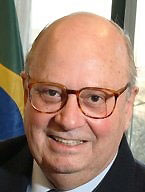Regional integration: possible reality
Notícia publicada em:
- 13 de Maio de 2015
The narrowing of the relationship with Latin America in general and with South America in particular represents the most positive result of the reorientation of the foreign policy followed after the reunion of Brazil with its democratic identity in the 80´s. The starting point was the recasting of the relationship with Argentina, through the growing creation from 1986 of a preferred understanding democratic space and of integration, expressed after successive specific agreements in the 1988 Treaty that created the Common Market Brazil-Argentina.
Subsequently, the project of the Common Market in Brazil-Argentina was expanded to incorporate Paraguay and Uruguay, but somehow had their power reduced of a Common Customs Union Market, through the Treaty of Asunción in 1991 that created Mercosur. Other important confidence measures were taken, as the constitution of the Argentina-Brazilian Agency for Accounting and Control of Nuclear Materials (ABACC) and the Safeguards Agreements with the International Atomic Energy Agency (IAEA).
With the passage of time, the South and Latin American axis of foreign policy of Brazil took strong impetus. Decision-making processes were consolidated in Mercosur; the Peru-Ecuador border conflict was resolved under Brazilian leadership; Brazil took the initiative to convene and host in Brasilia the 1st meeting of Presidents of South America.
In the years 2000, Latin America in general and South America in particular were ratified as number one priority of the foreign policy of Brazil. It was strengthened in terms of rhetoric the strategic partnership with kirchnerist Argentina , although economic difficulties would further decrease the “porteño” commitment with the deepening of the Mercosur. Venezuela would incorporate itself to the Treaty of Asunción on a mainly argentinian manoeuvre initiative, a country that depended then on the financial support of Venezuela.
South America, however, rather than strengthening itself, went on to run the risk of fragmenting in differentiated groups: one that gathers around the Pacific, involving Chile, Peru and Colombia, along with Mexico (the Pacific Alliance); and another which continues to revolve around a Mercosur increasingly debilitated, plus Bolivia and Ecuador. If configured, as well, as has already been said, a new line of Tordesillas in the South American space.
Notwithstanding the current difficulties, the topic of integration deeply mark our present and it is destined to decisively influence our future. The integration, in fact, is a possible reality. The role of Governments and of economic agents must be, therefore, of acting to extend the limits of their possibilities.
The exponential growth of intra-Mercosur trade in the years 90 gave us all the illusion of success. While playing with the rates, we forget the fact that they generate (or inhibit) trade, but hardly induce the integration. We forget that without joint sectorial policies, without harmonisation of the comparative advantages of each through the integration of productive chains, mainly between Argentina and Brazil, there will be no integration ever. From the original optimism we pass to a present of growing disappointment.
Essential protagonists of the process, Brazil and Argentina are countries which, having in consideration their differences, perceive each other as privileged interlocutors and essential partners in the consolidation and expansion of their respective national and international projects. We share the conviction also that, to attain these objectives, it is essential that it shall be supplemented under a broader regional perspective.
In practice, however, Mercosur, based originally on the convergence of visions and purposes between Brazil and Argentina, was ruled by a dinamic of differences and frictions mutually aggravating, right at the moment it becomes more necessary the cohesion between the two. It would therefore be particularly important to prevent that Mercosur remain on the bilateral agenda under a sign increasingly conflicting. It becomes essential to develop a vision for the future of Mercosur shared between the two. Otherwise, each of which will see Mercosur in the mirror of their own delusions and all will be doomed to misunderstandings which may have detrimental effects to the individual interests and sets of partners.

Mercosur is a conscious utopia, i.e. an institution to an extent virtual, resulting, not necessarily from a fear of reality, like most utopias, but from the interest to consider reality as a permanent task and a perpetual invention. As such, it must be permanently lurking the limits of the possible. We either approach our perspectives or we are doomed to continue facing the same phenomena with different eyes and seeing different things, each one accusing the other of not seeing what, deep down, they might prefer not to see.
The term of the alliance with Argentina must be ensured as the highest priority in the framework of external relations of Brazil. With creative imagination, more perseverance and a little more of “complicity”, we can regain the momentum of Mercosur to the benefit of Brazil, Argentina and the whole of our region.
*Article published in El País, in May/12, column of Luiz Felipe de Seixas Corrêa.




